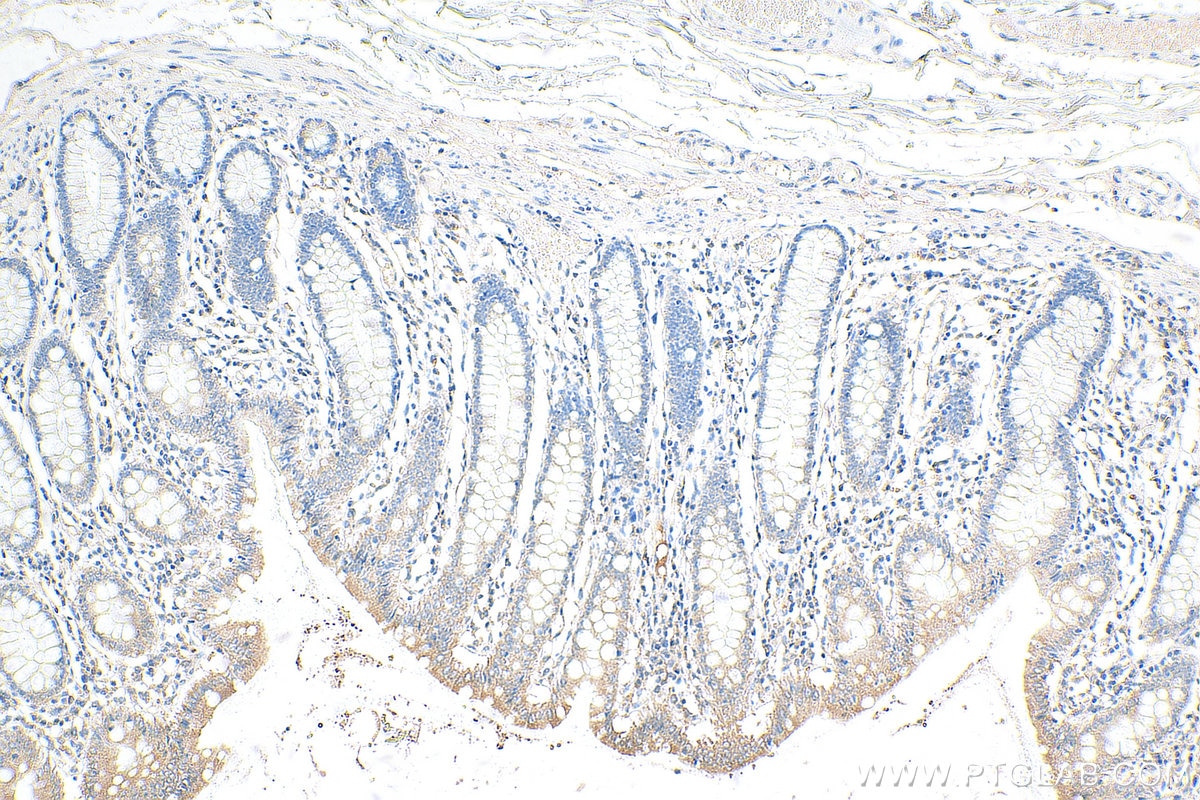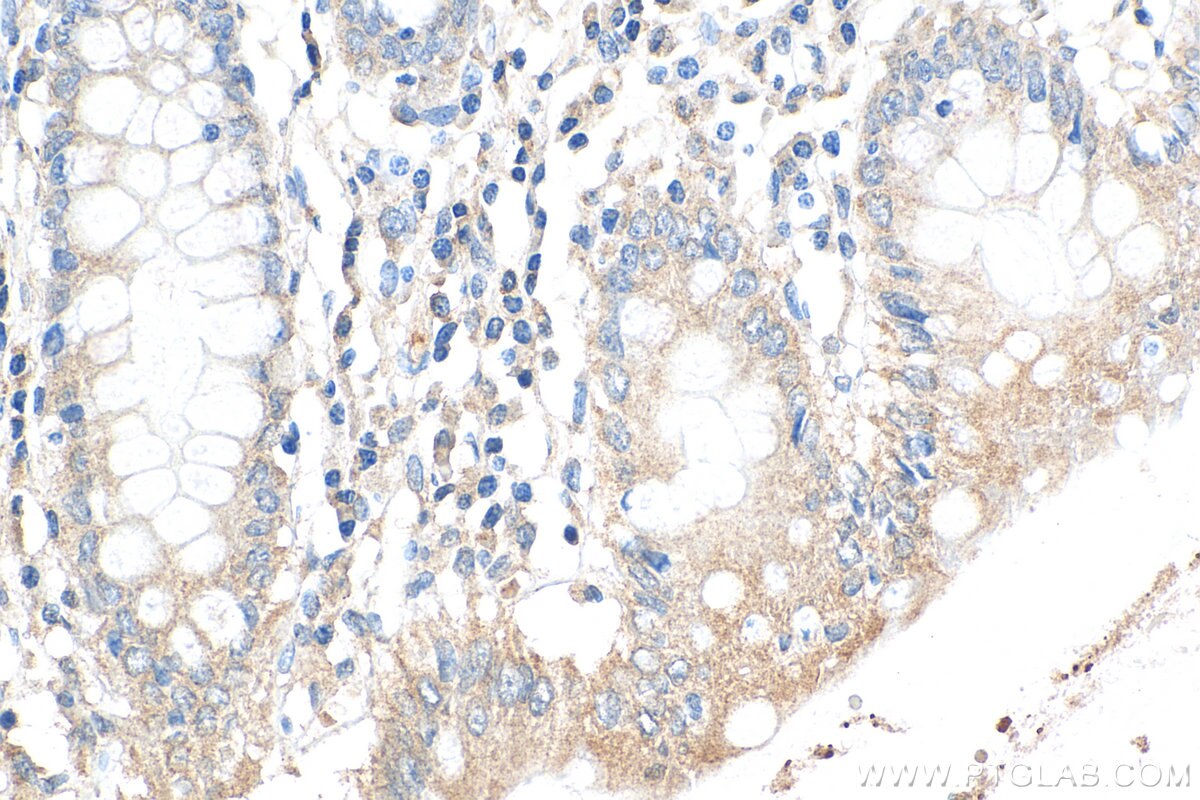Validation Data Gallery
Tested Applications
Recommended dilution
| Application | Dilution |
|---|---|
| It is recommended that this reagent should be titrated in each testing system to obtain optimal results. | |
Product Information
13601-1-PBS targets ITM2C in IHC, Indirect ELISA applications and shows reactivity with human samples.
| Tested Reactivity | human |
| Host / Isotype | Rabbit / IgG |
| Class | Polyclonal |
| Type | Antibody |
| Immunogen |
CatNo: Ag3876 Product name: Recombinant human ITM2C protein Source: e coli.-derived, PGEX-4T Tag: GST Domain: 1-230 aa of BC025742 Sequence: MVKISFQPAVAGIKGDKADKASASAPAPASATEILLTPAREEQPPQHRSKRGSSVGGVCYLSMGMVVLLMGLVFASVYIYRYFFLAQLARDNFFRCGVLYEDSLSSQVRTQMELEEDVKIYLDENYERINVPVPQFGGGDPADIIHDFQRRGTYLPQTYIIQEEMVVTEHVSDKEALGSFIYHLCNGKDTYRLRRRATRRRINKRGAKNCNAIRHFENTFVVETLICGVV 相同性解析による交差性が予測される生物種 |
| Full Name | integral membrane protein 2C |
| Calculated molecular weight | 230aa,26 kDa; 267aa,30 kDa |
| Observed molecular weight | 30 kDa |
| GenBank accession number | BC025742 |
| Gene Symbol | ITM2C |
| Gene ID (NCBI) | 81618 |
| RRID | AB_2877960 |
| Conjugate | Unconjugated |
| Form | |
| Form | Liquid |
| Purification Method | Antigen affinity purification |
| UNIPROT ID | Q9NQX7 |
| Storage Buffer | PBS only{{ptg:BufferTemp}}7.3 |
| Storage Conditions | Store at -80°C. |
Background Information
The Integral membrane protein 2C (ITM2C) is a type II integral transmembrane protein belonging to a family composed of at least two other members, ITM2A and ITM2B. ITM2C, often called transmembrane protein BRI3, is highly expressed in brain tissue. Yeast two-hybrid screen system revealed that BRI3 could interact with beta-secretase beta-amyloid protein converting enzyme (BACE)1 and the microtubule-destabilizing protein SCG10 (STMN2). It may play a role in TNF-induced cell death and neuronal differentiation. BRI3 was found to inhibit the various processing of amyloid precursor protein (APP) by blocking the access of alpha- and beta-secretases to APP, competitive inhibition of APP processing by BRI3 may provide a new approach to Alzheimer disease (AD) therapy and prevention.


